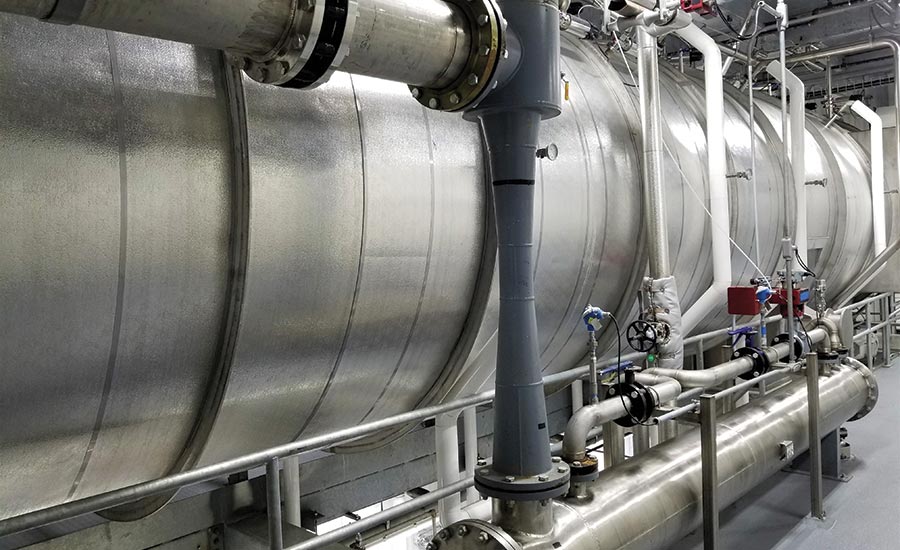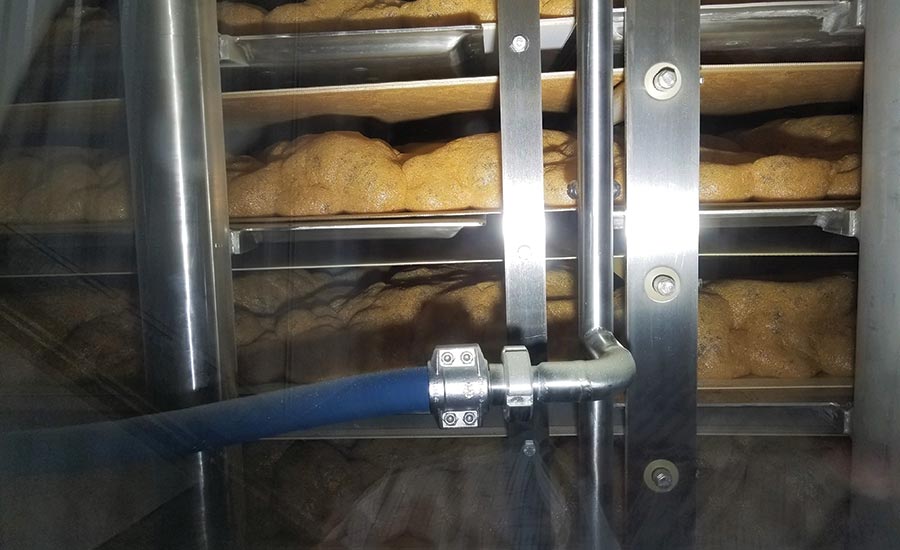Reprinted from: Food Engineering
Using vacuum belt drying to convert liquid sweeteners to powder
Liquid malted barley extract is being dried for use as a natural sweetener. The process takes 20-35 minutes to complete, depending on the product.

The 58-ft. vacuum belt dryer allows the liquid malted barley extract to be made into a cake that is milled into a powder during the next process step.
The company recently invested $50 million to upgrade its production facility, including a $15 million Bucher Unipektin vacuum belt dryer purchase.
“This upgrade is a response to current and anticipated growth,” says Amy Targan, president of MPC. “The market for the sorts of natural, non-empty-calorie sweeteners we produce is growing exponentially, and all indications are that it will continue to do so as consumers seek healthier, more nutritious ingredients.”
 The new dryer is the culmination of a five-year, $50 million investment by MPC, beginning with the 2015 expansion of its brew house and addition of a Meura mash-filter, expanded laboratory, research and development, and customer application capabilities. These investments are in response to increasing demand for non-GMO and natural, nutritious ingredients.
The new dryer is the culmination of a five-year, $50 million investment by MPC, beginning with the 2015 expansion of its brew house and addition of a Meura mash-filter, expanded laboratory, research and development, and customer application capabilities. These investments are in response to increasing demand for non-GMO and natural, nutritious ingredients.
The surge in demand also can be attributed to heightened awareness of malted barley extract’s unique flavor profile and numerous health benefits, including probiotics, antioxidants and sports recovery perks, Targan explains. “The upgrade was needed to provide the best foundation for MPC to manufacture our comprehensive line of malt extract and natural sweeteners, as well as to handle new capacity completely in-house.”
Powder-Making Process
Before the sweeteners can be turned into a dry powder, they first must be made into liquid. The liquid process begins with the malted barley being pneumatically loaded into silos. From there, the product goes to the grinder and then the mash tuns, to which water is added and heated. During this process, natural enzymes in the malted barley convert starch into sugars. Next, this mixture is sent to the mash filter, from which a wort is produced. Filtered by a lauter tun, the product contains 20% to 30% solids, while the remaining spent grains are sent to farms for cow feed, Targan says.
The wort is then moved to a four-stage plate-and-frame evaporator made by API Heat Transfer. The final product is then revealed—a viscous syrup, which is similar to honey or molasses.
At this point, the making of powder products can commence as a “tack on” to the liquid process, Targan explains. Via nozzles, liquid malted barley extract is fed to the vacuum belt dryer on each belt through the dryer’s six chambers, which are set to different temperatures. “Depending on the product/recipe, the first four chambers are used to heat the product; the last two to cool it. The process can take anywhere from 20-35 minutes, product-depending,” she says. The result is a cake that is ground into powder in a mill.
Benefits of Vacuum Belt Drying
When asked why MPC opted to invest in this type of drying equipment, Targan explains, “One of the benefits that really impressed us about the Bucher Unipektin vacuum belt dryer was the combination of robust output and gentleness. It’s a wonderful combination of expedience and effectiveness, and it does an admirable job retaining flavor, aroma and color.”
Since vacuum belt drying operates by reducing the pressure in its chamber, moisture is evaporated from the product at far lower temperatures. This eliminates oxidation and prevents damage to critical functionalities of the original syrup. She says, “Vacuum belt drying is an attractive option for malted barley extract—as opposed to spray drying—as it is a gentle process that protects unique-to-product characteristics not found in other sweeteners, including antioxidants, essential amino acids, minerals and vitamins.”
She goes on to say that vacuum belt drying also helps avoid burnt notes or other off flavors and aromas with spray drying, and it better controls the maillard reaction for a more consistent final product color. “The process also produces a powder that is highly soluble in cold liquids, making it preferable for malt beverages. The enhanced technology will allow MPC to manufacture products such as honey, agave and molasses that are difficult or impossible to dry on a spray dryer without additives.”
Targan reveals that the company initiative also has an eye toward eco-consciousness. “Vacuum belt dryers use less energy and water than spray dryers, reducing environmental impact and aligning with MPC’s broader commitment to sustainability.”
For more information, visit www.bucherunipektin.com

